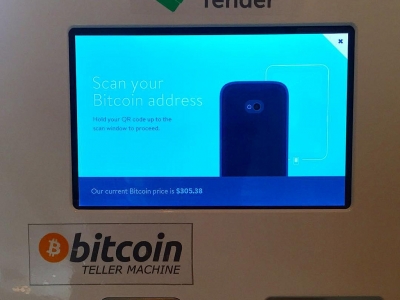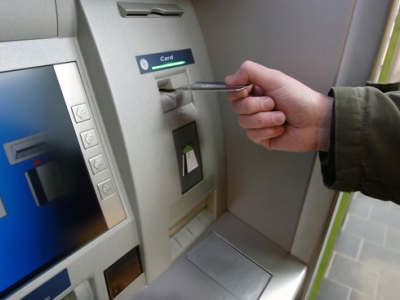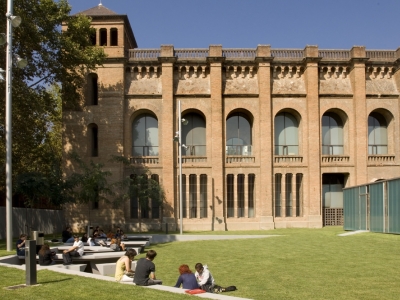The number of bitcoin-selling machines in December 2015 was growing explosively. However, their distribution is as uneven as ever, with 86% located in North America and Europe. And many of them, as it turns out, do not work at all.
The first bitcoin ATM was installed in Vancouver on 28 October 2013 by Robocoin and was a huge success. The company claimed that over eight days the machine processed the amount equivalent to CA$100,000. Soon other companies followed suit. Now, according to Coin ATM Radar, there are 540 bitcoin ATMs globally produced by 16 different manufacturers. The northernmost is in Kuopio, Finland; the southernmost is on Tasmania island.
During most of 2015 the increase in the number of bitcoin ATMs was lower than expected by Coin ATM Radar. There was 330 of them by 1 January 2015 and only 486 on 1 December 2015. The reasons suggested by journalists were the high cost of bitcoin ATMs, lack of good locations, complications resulting from bitcoin regulation and emergence of competing services offering bitcoin-to-cash and cash-to-bitcoin exchange. However, the last month of the year saw more than 50 new bitcoin ATMs worldwide. It can be safely assumed that this sudden popularity of bitcoin vending machines was driven by the surge in bitcoin price.
The number of bitcoin ATMs in North America grows quicker than in any other part of the world. More than a third of all machines (namely 216 of them) are currently located in the US, with another 96 in Canada, giving these two countries a 57% share of all existing bitcoin ATMs. Other popular locations include the UK (29), Australia (22), Spain (19), Finland and Hong Kong (13 each). There are only three bitcoin ATMs in all post-Soviet countries (in Estonia, Kazakhstan and Kyrgyzstan), only two in the whole of South America (Argentina and Paraguay) and only one in all Arab-speaking countries (Saudi Arabia). For the whole African continent the launch of one bitcoin machine was reported with certainty, in the suburbs of Johannesburg, South Africa. However, despite later expectations to receive more ATMs in SA and Botswana, even the first one has finally gone off the Coin ATM Radar and can hardly be confirmed working now.
About 40% of bitcoin ATMs are two-way machines while the rest are one-way. The leading ATM producers are Lamassu and Genesis Coin, having made 140 and 134 machines respectively, followed by BitAccess (71) and General Bytes (66). The cost of bitcoin ATMs of four leading manufacturers ranges from $2,800-5,500 (General Bytes) to $5,800-14,500 (Genesis Coin). The cheapest solution (Skyhook, $1,000) and the most expensive one (Robocoin, $10,000-$35,000) are no longer available, though machines powered by those two companies are still out there in numbers (44 and 24 respectively).
Some bitcoin ATMs can work with altcoins as well. One machine, located in Chicago, US, also offers litecoins. Four machines (one in US, one in Mexico and two in Australia), sell bitcoin, litecoin and dogecoin. Finally, on three ATMs (US, China and Hong Kong) four different cryptocurrencies are available – bitcoin, litecoin, dogecoin and blackcoin.
Despite the growth of fees charged by bitcoin ATMs (the average was around 5% for a transaction a year ago but grew up to 7.17% and even to 15-20% at some bitcoin ATMs in New York), people still use them: bitcoin ATM offers a possibility to buy the cryptocurrency without filling out extensive forms, attaching bank accounts to online exchanges or meeting obscure people in sketchy places.
It means the business is still profitable. However, many things should be taken into account when buying and installing a bitcoin ATM, from regulatory environment to the location. While the first bitcoin ATMs were often installed by bitcoin enthusiasts, at the end of 2015 many of them were operated by shrewd businessmen: some of these, based in the US, UK or Canada, now control large networks of 11 to 24 bitcoin ATMs. At the same time, many bitcoin ATMs were removed because they failed to bring their owners any profit and even operated at loss.
Unfortunately, while every new bitcoin ATM gets a lot of publicity, the end of operation is often unnoticed. That is why the real number of functioning bitcoin ATMs is way below 540. As CoinFox wrote in November, while Coin ATM Radar lists five bitcoin ATMs in New England, only one is actually working, and the status of four others is marked as “temporary outage” or “might be non-working”. Two months later nothing has changed, and the four non-functioning ATMs are not removed from the map.
If this sample is representative, it means there may be just a little more than 100 functioning bitcoin ATMs in the world. CoinFox decided to check the situation and visit a few more regions. We chose two US states, Florida and Texas, and three countries, Italy, Japan and the Netherlands.
In Florida Coin ATM Radar lists four bitcoin machines. Two of them are located in Orlando, one “might be not working” and one “have not heard for a while”. Two others are in Miami, and both are listed as “available”. One of them was installed just on 17 December and another one received seven positive comments from users.
Of nine bitcoin ATMs listed in Texas, four (in Dallas and Fort Worth) are marked as “available”, two of them are freshly installed in December 2015. Five others, located in Austin and Houston, are marked as “have not heard for a while”, “might be non-working” or even “removed/broken”.
In Italy Coin ATM Radar lists nine bitcoin ATMs. Of these, one is “not working at the moment”, three more have status “have not heard for a while” and five (Pisa, Florence, Milan, Rovereto and Trieste) are listed as “available” or “longlasting available”. One, in Rovereto, was definitively working on 30 December 2015, as confirmed by a user.
Of twelve Japanese bitcoin ATMs, eight are listed as “available” or “longlasting available”, with two recent confirmations, one as “have not heard for a while” and three as “might be non-working”.
Of seven Dutch bitcoin ATMs, four are listed as “longlasting available”, though two of them, owned by BitPay, are not open to the general public. Two more are listed as “have not heard for a while” and one is not operational now but is expected to be replaced with a new one soon.
We can see that in all our six sample regions only a fraction of bitcoin ATMs listed by Coin ATM Radar are really available. The share of those is smaller in the US – 20% in New England, 44% in Texas and 50% in Florida. In other three countries it is larger, reaching 55% in Italy, 57% in the Netherlands and 67% in Japan. It means that while the situation globally is better than suggested by the New England sample, it is not absolutely rosy anymore and the numbers of bitcoin ATMs worldwide should nevertheless be taken with a grain of salt.
Alexey Tereshchenko

















